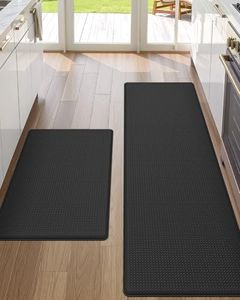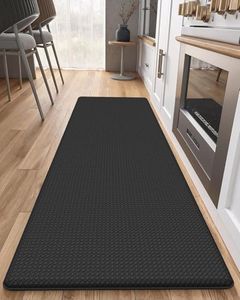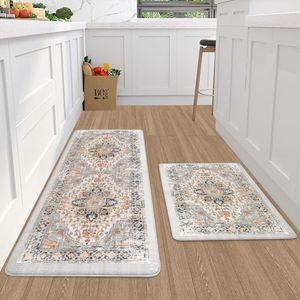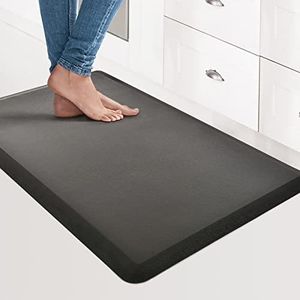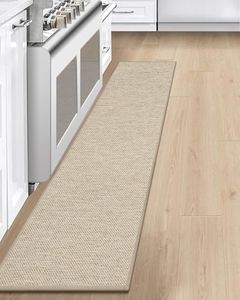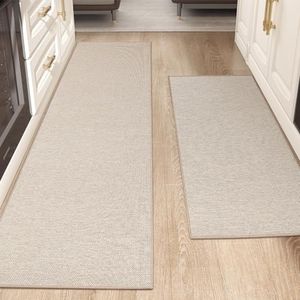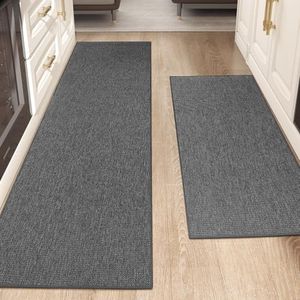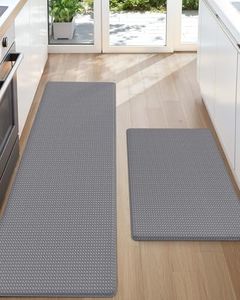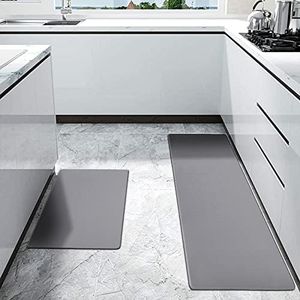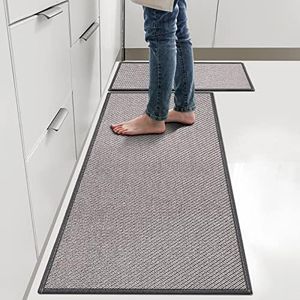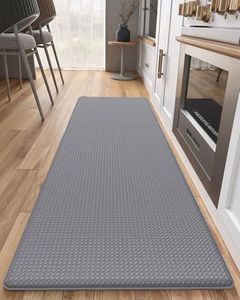We Use CookiesWe use cookies to enhance the security, performance,
functionality and for analytical and promotional activities. By continuing to browse this site you
are agreeing to our privacy policy
10 Best Kitchen Floor Mats
From leading brands and best sellers available on the web.Buying Guide for the Best Kitchen Floor Mats
Choosing the right kitchen floor mat can make your daily cooking and cleaning routines much more comfortable. Kitchen mats can reduce fatigue from standing, protect your floors, and even add a touch of style to your space. Since kitchens are high-traffic and often messy areas, it's smart to look for a mat that balances comfort, durability, and easy care. Understanding the main attributes of kitchen mats will help you select one that truly fits how you cook and move in your kitchen.MaterialThe material determines how comfortable, durable, and easy to clean your mat will be. Common materials include foam, rubber, gel, and fabric-covered mats. Foam and gel mats tend to provide better cushioning, which can make a big difference during long hours of meal prep. Rubber mats are sturdier and more resistant to water and stains but might offer less softness. Fabric mats are often more decorative but may require frequent washing. Think about whether you prioritize softness and support, or if you need a mat that's especially easy to clean and sturdy against spills.
Thickness and CushioningThis spec refers to how much padding the mat provides, measured in millimeters or inches. Thinner mats offer minimal support but may fit more easily under doors or in small spaces. Medium-thickness mats (about 0.5 inches) provide a good balance of comfort and stability for most users. Thicker mats (1 inch or more) offer maximum anti-fatigue benefits, ideal for anyone who stands for long periods but may be more noticeable underfoot and harder to keep clean. If you cook or bake often, a thicker mat under main work areas can help reduce discomfort.
Size and ShapeKitchen mats come in a variety of sizes and shapes, including runners, rectangles, and contoured options. The right size depends on the area where you'll place it—standard mats (about 20x30 inches) are great for sinks or stoves, while runners (about 20x60 inches) fit well along counters or galley kitchens. Choose a size that covers your main standing area without creating a tripping hazard or making cleaning awkward.
Non-Slip BackingNon-slip backing helps keep the mat in place, preventing it from sliding around on smooth kitchen floors. This is especially important for safety, since kitchens can be wet or messy. Non-slip features vary, with some mats having grippy rubber textures and others using suction or adhesive strips. If your kitchen floor is hardwood or tile, prioritize a mat with strong non-slip backing to reduce the risk of slipping.
Ease of CleaningSince kitchens involve spills and crumbs, it's important that the mat is easy to clean. Some mats are wipeable or waterproof, so you can quickly clean up spills with a damp cloth. Others are machine-washable, which is convenient for deep cleaning. If you anticipate a lot of mess or have pets and kids, look for a mat with simple care instructions and materials that resist staining.
Design and ColorWhile not affecting functionality directly, the design and color of your mat can impact how it looks in your kitchen. Some mats are available in neutral shades to blend in, while others feature bright patterns or designs. Pick a style that matches your kitchen decor, but remember that darker colors or patterned mats can help hide dirt and stains between cleanings.

